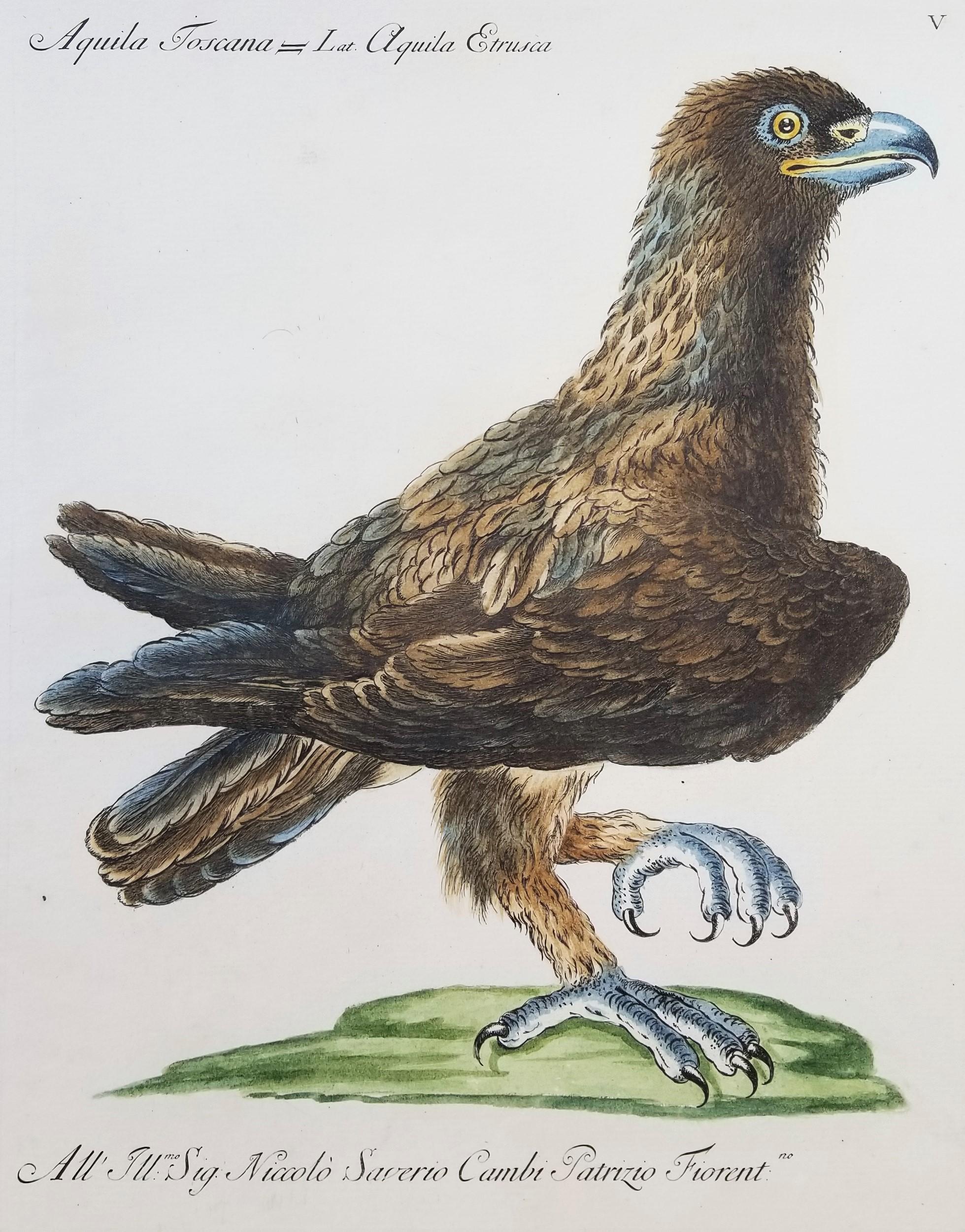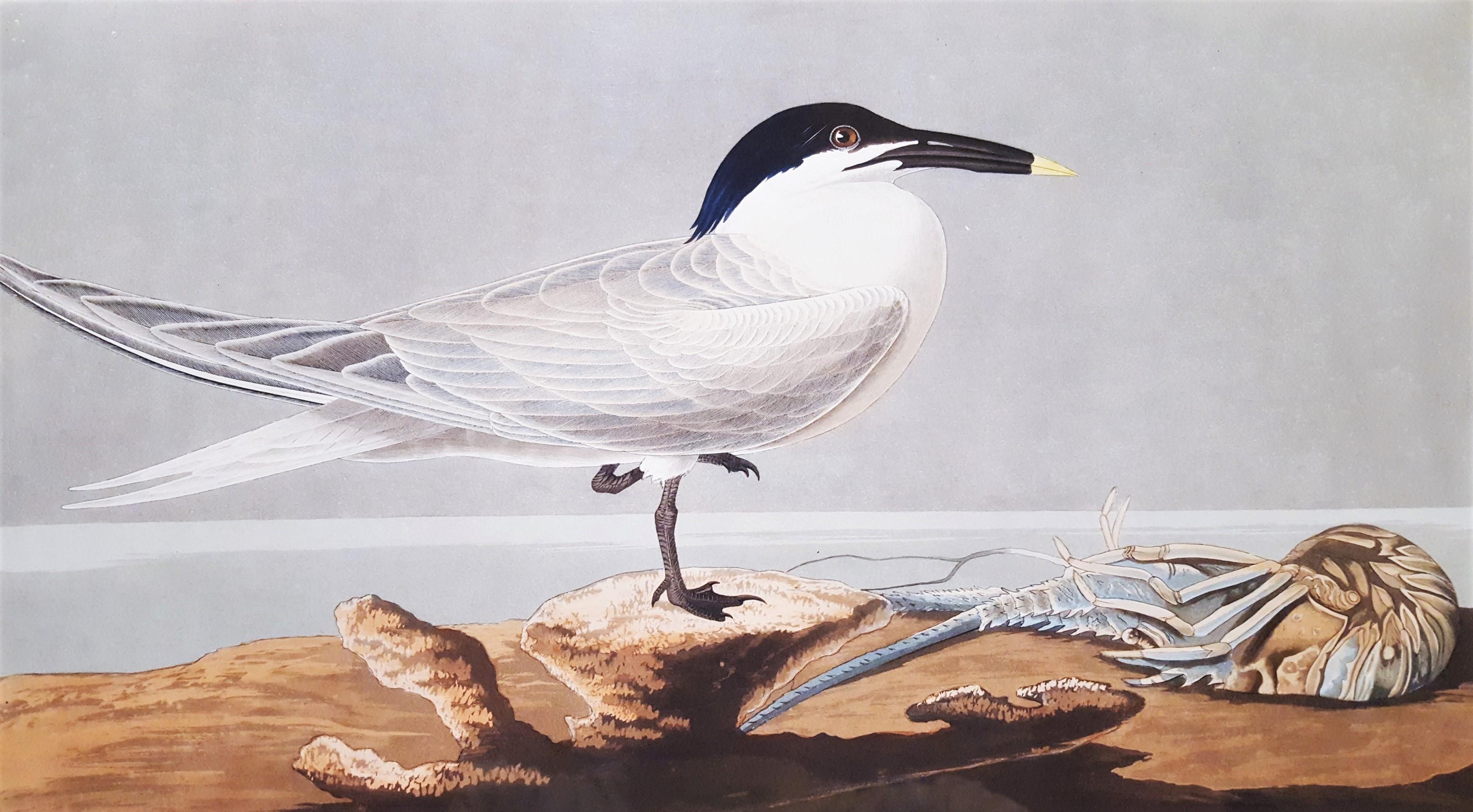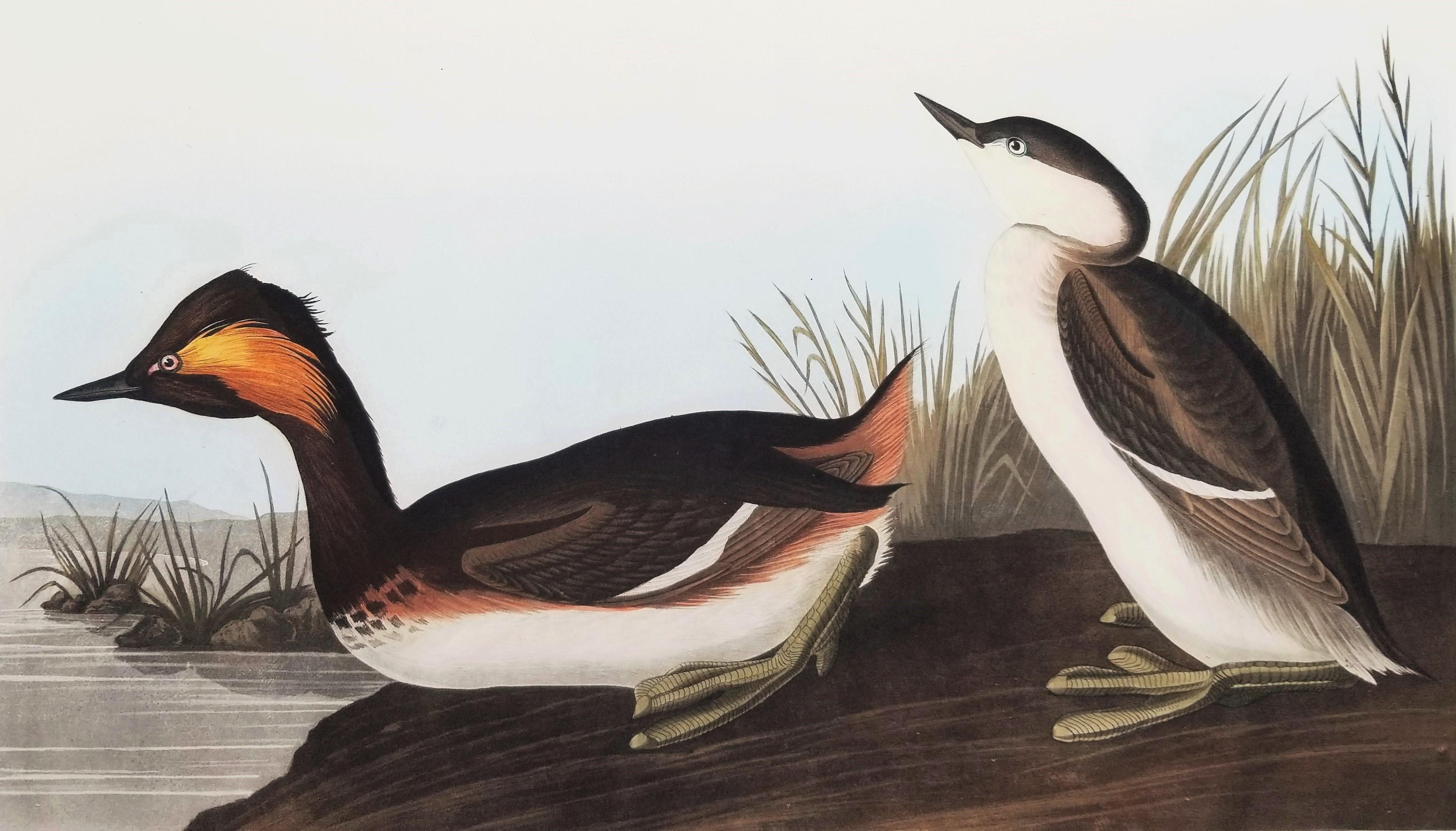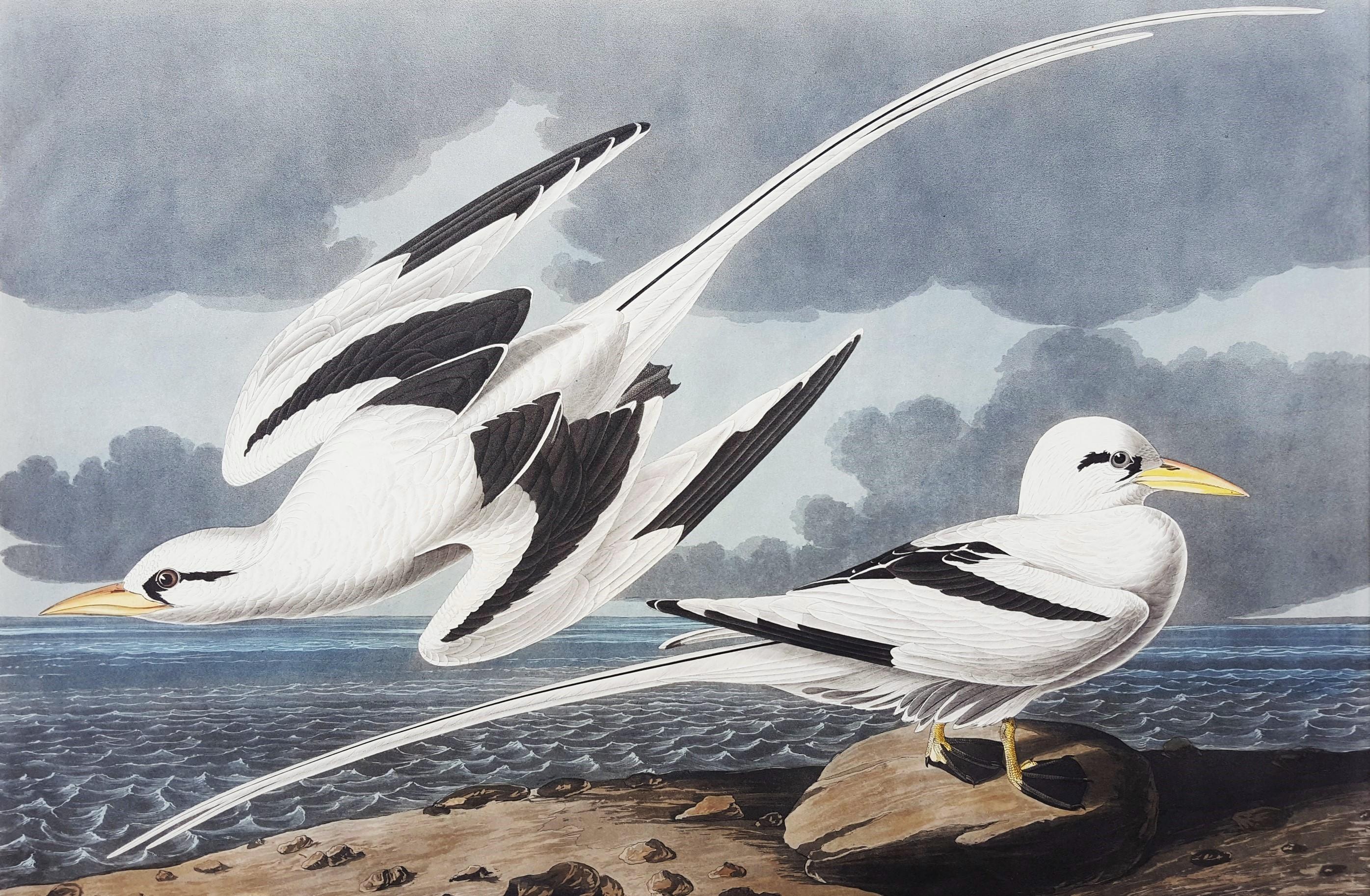Items Similar to Putorius & Pseudo Phalangium (The Pole-Cat) (Skunk) /// Mark Catesby Animal Art
Want more images or videos?
Request additional images or videos from the seller
1 of 24
Mark CatesbyPutorius & Pseudo Phalangium (The Pole-Cat) (Skunk) /// Mark Catesby Animal Art1771-1810
1771-1810
About the Item
Artist: Mark Catesby (English, 1638-1749)
Title: "Putorius & Pseudo Phalangium (The Pole-Cat) (Skunk)" (Plate/Tab 62)
Portfolio: Natural History of Carolina, Florida & the Bahama Islands
*Monogram signed by Catesby in the plate (printed signature) lower right
Year: 1771-1810 (third edition)
Medium: Original Hand-Colored Etching on cream J. Ruse handmade paper
Limited edition: Unknown
Printer: Unknown
Publisher: Benjamin White, London, UK
Framing: Not framed, but recently matted in 100% cotton linen fabric matting with acid-free foam board backing
Matted size: 18.88" x 22.38"
Sheet size: 13.75" x 21.13"
Platemark size: 10.25" x 13.75"
Condition: UV staining to sheet and mat stain in margins. Some soft handling creases. In otherwise good condition
Very rare
Notes:
Provenance: private collection - Miami, FL. Comes from Catesby's famous two volume portfolio "Natural History of Carolina, Florida & the Bahama Islands" (1771-1810) (third edition), which consists of 220 hand-colored etchings. "J. Ruse 1800" watermark lower right.
Mark Catesby's The Natural History of Carolina, Florida and the Bahama Islands is generally credited as the first published work to provide illustrations and descriptions of North American flora and fauna. From 1722-1726 Catesby, an English naturalist, ranged over South Carolina, Georgia and the Bahamas sketching and collecting specimens of native plants and animals.
Skunks are North and South American mammals in the family Mephitidae. While related to polecats and other members of the weasel family, skunks have as their closest Old World relatives the stink badgers. The animals are known for their ability to spray a liquid with a strong, unpleasant scent.
Biography:
Mark Catesby (24 March 1683 – 23 December 1749) was an English naturalist. Between 1729 and 1747 Catesby published his Natural History of Carolina, Florida and the Bahama Islands, the first published account of the flora and fauna of North America. It included 220 plates of birds, reptiles, amphibians, fish, insects, mammals and plants. Mark Catesby's The Natural History of Carolina, Florida and the Bahama Islands is generally credited as the first published work to provide illustrations and descriptions of North American flora and fauna. From 1722-1726 Catesby, an English naturalist, ranged over South Carolina, Georgia and the Bahamas sketching and collecting specimens of native plants and animals. Little is known of Catesby's early life. He was born in eastern England in 1683. Although Catesby does not appear to have attended university or studied for the Bar, he was sufficiently educated to write clear English and Latin. His interest in and knowledge of plants may have derived from his uncle, who maintained a botanical garden. Catesby also appears to have benefited from an acquaintance with John Ray, a leading English naturalist of the 17th century and the co-author of an early classic study of birds. It is unclear when or how Catesby developed his skills as an artist.
Catesby's first visit to North America occurred in 1712 when he traveled to Williamsburg, Virginia, to live with his sister and her husband, who had settled there. During his seven-year stay, he explored the length of the James River sketching plants and collecting botanical samples. Upon Catesby's return to England in 1719, his work in Virginia drew the attention of several influential members of the Royal Society. And with their financial backing, Catesby returned to North America three years later, arriving in Charleston in May 1722. During his four-year stay, he traveled throughout South Carolina, coastal Georgia and to the Bahamas. The sketches and specimens Catesby gathered during his second North American trip formed the basis for The Natural History of Carolina, Florida and the Bahama Islands. Although most often found as a two-volume set, Catesby's Natural History was published in 11 discrete sections from 1734-1747 and sold by subscription. Although Catesby died in 1749, his work was republished in 1754 and again in 1771. Catesby's work predated the classification system developed by Swedish botanist Carl Linneaus. However, the 1771 edition, featured here, includes a catalog of the Linnean names for the plants and animals Catesby featured in Natural History.
- Creator:Mark Catesby (1682 - 1749, English)
- Creation Year:1771-1810
- Dimensions:Height: 18.88 in (47.96 cm)Width: 22.38 in (56.85 cm)
- Medium:
- Movement & Style:
- Period:1770-1779
- Condition:
- Gallery Location:Saint Augustine, FL
- Reference Number:1stDibs: LU12128144042
About the Seller
5.0
Platinum Seller
These expertly vetted sellers are 1stDibs' most experienced sellers and are rated highest by our customers.
Established in 1978
1stDibs seller since 2015
1,214 sales on 1stDibs
Typical response time: <1 hour
- ShippingRetrieving quote...Ships From: Saint Augustine, FL
- Return PolicyA return for this item may be initiated within 3 days of delivery.
More From This SellerView All
- Eagle /// Antique Ornithology Bird Saverio Manetti Italian Watercolor EngravingBy Saverio ManettiLocated in Saint Augustine, FLArtist: Saverio Manetti (Italian, 1723-1785) Title: "Eagle" (Plate V - 5) Portfolio: Storia Naturale Degli Uccelli (The Natural History of Birds) Year: 1767-1776 Medium: Original Hand-Colored Engraving on watermarked laid paper Limited edition: Unknown Printer: Unknown Publisher: heirs of Francesco Mouck (Vols. I-III), Gaetano Cambiagi (Vol. IV), Giuseppe Vanni (Vol. V), Florence, Italy Sheet size: 16.75" x 14.5" Platemark size: 13.63" x 10.88" Condition: Some minor surface marks mainly in margins. In excellent condition with strong colors Rare Notes: Provenance: private collection - Haarlem, Netherlands. Engraved and hand-colored by Italian artists Lorenzo Lorenzi (Active: 1750-1780) and Violante Vanni (1732-1776). Latin and Italian texts by Saverio Manetti. Comes from Manetti's monumental 5 book volume "Storia Naturale Degli Uccelli (The Natural History of Birds)", (1767-1776), which consists of 600 hand-colored prints, miniature and life-size prints, made from engraved plates. Unidentified watermark in very center of sheet. Comes with its accompanying information sheet. Eagle is the common name for many large birds of prey of the family Accipitridae. Eagles belong to several groups of genera, some of which are closely related. Most of the 60 species of eagle are from Eurasia and Africa. Manetti's extraordinary "Storia Naturale Degli Uccelli (The Natural History of Birds)", 1767-1776 was commissioned by Maria Luisa, the Grand Duchess of Tuscany. It is a massive 5 book volume set...Category
1770s Old Masters Animal Prints
MaterialsIntaglio, Laid Paper, Handmade Paper, Watercolor, Engraving
- Woman Spinner and a Shepherd with Flock /// Sheep Lady Antique Landscape AnimalBy Francesco LondonioLocated in Saint Augustine, FLArtist: Francesco Londonio (Italian, 1723-1783) Title: "Woman Spinner and a Shepherd with Flock" *Signed and dated by Londonio in the plate (printed signature) upper right Year: 1759 (first state of two) Medium: Original Etching on blue wove handmade paper Limited edition: Unknown Printer: Unknown Publisher: Likely the artist Londonio himself Reference: Scola No. 13 Sheet size: 7.25" x 5.5" Image size: 6.75" x 5.25" Condition: Presently archivally tipped into a storage mat. Some light foxmarks to sheet. Minor crease across the two sheeps' heads. It is otherwise a strong impression in very good condition Very rare Notes: The plate number "12" printed upper right in margin. "Sammlung Hämmer (Hammer Collection)" inkstamp in green on verso lower center. Biography: Francesco Londonio (Milan, 1723 – Milan, 1783) was an Italian painter, engraver, and scenographer, active mainly in Milan in a late-Baroque or Rococo style. Londonio trained as a painter under Ferdinando Porta and Giovanni Battista Sassi in Milan, but traveled to Rome and Naples. He studied engraving with Benigno Bossi. He is best known for his paintings and ectchings of rustic and pastoral landscapes and subjects, with both animals and peasants playing a dominating role over the landscape. This focus on genre themes was popular among the wealthy patrons of the time, specially in Northern Italy; and artists such as the Brescian painters Ceruti and Cifrondi worked with such themes. In his engravings, he recalls Gaetano Zompini. Londonio is also known for his scenography. An example, of this poorly conserved art form that still exists is a nativity scene on cut wooden shapes for the church of San Marco in Milan. The effect is a cheaper version of the naturalistic Sacri Monti scenes, which had been painted stucco statuary. It also can be seen as a cross between the holy scenes described above, and the theatrical set pieces, for example, those needed for the newly founded La Scala theater. The work at San Marco prompted Empress Maria Theresa of Austria...Category
1750s Old Masters Animal Prints
MaterialsIntaglio, Etching, Handmade Paper
- Eared Grebe /// John James Audubon Ornithology Havell Edition Bird Animal ArtBy John James AudubonLocated in Saint Augustine, FLArtist: John James Audubon (American, 1785-1851) Title: "Eared Grebe" (Plate CCCCIV - 404; part No. 81) Portfolio: The Birds of America, Havell Edition Year: 1838 Medium: Original Ha...Category
1830s Victorian Animal Prints
MaterialsWatercolor, Engraving, Aquatint, Intaglio
- Greenshank (View of St. Augustine & Spanish Fort East Florida) /// Bird AudubonBy John James AudubonLocated in Saint Augustine, FLArtist: John James Audubon (American, 1785-1851) Title: "Greenshank (View of St. Augustine & Spanish Fort East Florida)" (Plate CCLXIX - 269; part No. 54) Portfolio: The Birds of America, Havell Edition Year: 1835 Medium: Original Hand-Colored Engraving with Aquatint on double-elephant folio, J. Whatman paper Limited edition: approx. 180 Printer: Robert Havell Jr., London, England Publisher: John James Audubon, London, England Framing: Recently framed in an ornate black and gold moulding with fabric rag matting and gold filet Framed size: 26.25" x 31.75" Sheet size: 21.75" x 27.25" Platemark size: 15" x 20.63" Image size: 12" x 18" Condition: The sheet is laid down to board. Light toning and discoloration to sheet. The occasional pinhole or faint surface abrasion. In otherwise good condition with good colors Rare Notes: Provenance: private collection - Denver, CO. Engraved, printed, and hand-colored by English artist Robert Havell Jr. (1793-1878). Comes from Audubon's monumental book volume "The Birds of America", (Havell Edition, 1827-1838), which consists of 435 hand-colored, life-size prints, made from engraved plates, with each sheet originally measuring around 39" x 26". The would be "J. Whatman 1835" watermark is likely missing due to its trimming. The composition was probably painted in England in 1835, using a preserved specimen. Since no other than Audubon has ever claimed to have seen this European...Category
1830s Victorian Animal Prints
MaterialsWatercolor, Engraving, Aquatint, Intaglio
- Sandwich Tern (with Florida Cray Fish) (Florida Keys) /// Ornithology AudubonBy John James AudubonLocated in Saint Augustine, FLArtist: John James Audubon (American, 1785-1851) Title: "Sandwich Tern (with Florida Cray Fish) (Florida Keys)" (Plate CCLXXIX - 279; part No. 56) Portfo...Category
1830s Victorian Animal Prints
MaterialsGold Leaf
- Tropic Bird /// Ornithology John James Audubon Shorebird Ocean Beach SeascapeBy John James AudubonLocated in Saint Augustine, FLArtist: John James Audubon (American, 1785-1851) Title: "Tropic Bird" (Plate CCLXII - 262; part No. 53) Portfolio: The Birds of America, Havell Edition Year: 1835 Medium: Original Hand-Colored Engraving with Aquatint on double-elephant folio, J. Whatman paper Limited edition: approx. 180 Printer: Robert Havell Jr., London, England Publisher: John James Audubon, London, England Framing: Not framed, but matted in a handmade custom French matting Matted size: 30" x 38.75" Sheet size: 25.5" x 36" Platemark size: 20.75" x 30.25" Image size: 18.5" x 27.75" Condition: A few tiny foxmarks. In excellent condition with clean paper and strong colors Rare Notes: Provenance: private collection - New York, NY. Engraved, printed, and hand-colored by English artist Robert Havell Jr. (1793-1878). Comes from Audubon's monumental book volume "The Birds of America", (Havell Edition, 1827-1838), which consists of 435 hand-colored, life-size prints, made from engraved plates, with each sheet originally measuring around 39" x 26". "J. Whatman 1835" watermark upper right. Based on a composition painted between 1832 and 1835. Audubon sailed the entire length of Florida, around the Keys and as far as the Dry Tortugas, from which, on another occasion, "The specimens - in the plate were taken - by my kind friend Robert Day, Esq. of the United States Revenue Cutter...Category
Early 1800s Victorian Animal Prints
MaterialsIntaglio, Watercolor, Engraving, Aquatint
You May Also Like
- NOZEMAN & SEPP. A Pair of DucksBy Cornelius Nozeman and Jan Christian SeppLocated in London, GBDutch Birds NOZEMAN, Cornelius & SEPP, Jan Christian. Pair of Ducks: ANAS FERINA Mas and ANAS FERINA Foemina, from Nederlandsche Vogelen. Jan Christian S...Category
1770s Naturalistic Animal Prints
MaterialsWatercolor, Engraving, Handmade Paper
- Hunting Scene - Original Etching by Antonio Tempesta - Early 17th CenturyBy Antonio TempestaLocated in Roma, ITImage dimensions: 20.4 x 27.5 cm. Hunting Scene is a wonderful black and white etching on thick laid paper, realized by the Italian master, Antonio Tempesta (1555-1630). Monogramm ...Category
Early 17th Century Baroque Figurative Prints
MaterialsEtching
- Contemporary Monotype Collage Butterfly Moth Nature Print Framed Pink BlueBy Joseph ScheerLocated in Buffalo, NYThis digital print on handmade paper comes in a natural wood archival framing presentation I have called the body of work that I have done over the past decade “Imaging Biodiversity...Category
2010s Naturalistic Animal Prints
MaterialsEtching, Handmade Paper, Digital Pigment
- Barnacle Geese AffrightedLocated in Middletown, NYEtching and drypoint on cream wove paper, full margins. Signed and numbered 59/75 in pencil, lower margin. Notations in pencil along the lower sheet edge, recto, well outside of ima...Category
Mid-20th Century Modern Animal Prints
MaterialsHandmade Paper, Drypoint, Etching
- Une porte d'auberge / Inn DoorBy Charles-Emile JacqueLocated in Middletown, NYEtching on Chine collé mounted to cream wove paper, 3 7/8 x 5 7/8 inches (97 x 147 mm), full margins. With a pencil notation in the right margin on the recto (outside of image area),...Category
Mid-19th Century Figurative Prints
MaterialsHandmade Paper, Etching
- "The Game of Transformation. Butterflies"Located in Sempach, LUThe etching "The Game of Transformation. Butterflies" is an artist's play with meanings and associations. In this work, modern girls are presented in the form of glamorous fluttering...Category
2010s Aesthetic Movement Animal Prints
MaterialsPaper, Mulberry Paper, Mezzotint, Etching, Aquatint





